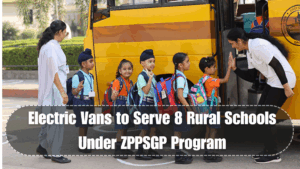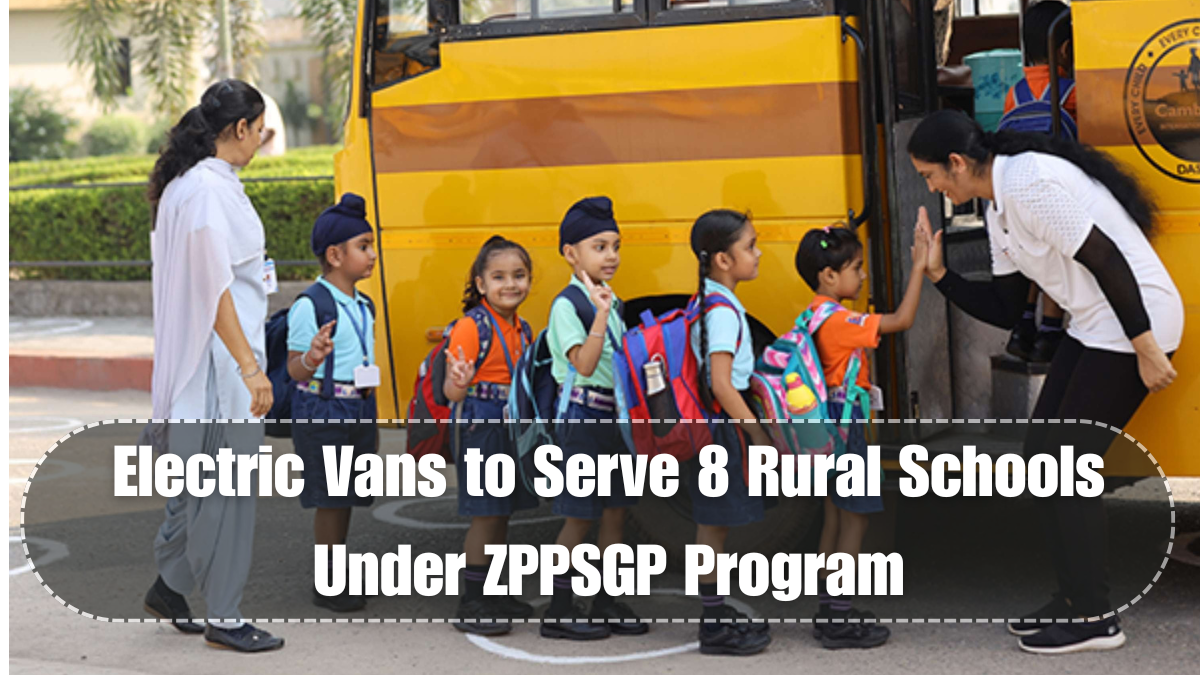In a major boost to rural education and eco-friendly transportation, the Zilla Parishad Primary Schools under the ZPPSGP scheme have officially rolled out a pioneering EV school van initiative in Maharashtra. The pilot program, which goes live in October 2025, will initially serve 8 rural schools across underserved tribal and remote regions. This project brings together government policy, environmental consciousness, and educational access under a single mission of green equity.
The rural school transport program comes in response to decades-long challenges faced by children in far-flung areas who must walk several kilometers daily just to attend school. With the launch of these electric vans, the state aims to address both educational dropout rates and vehicular emissions in one strategic effort.
Each school van will be powered by lithium-ion battery systems, offer GPS tracking, include child-safety locks, and operate under the supervision of trained personnel. Most importantly, these vans are fully compliant with Bharat EV standards and aligned with India’s ongoing push for green mobility.

Key highlights of the rural EV school van rollout
The EV school van initiative is a part of Maharashtra’s larger “Green Education Access” movement, which focuses on merging climate goals with developmental programs in backward regions.
Here’s what the first phase of the project includes:
-
Deployment of 8 fully-electric vans with a 100–120 km range per charge
-
Daily round trips scheduled to serve 20–30 students per van
-
Solar-powered charging stations installed at two rural school hubs
-
Live GPS and speed monitoring enabled for driver accountability
-
Emergency communication buttons inside every van
-
Trained female attendants on board for younger children
The program was launched after a transport audit revealed that 30% of students in tribal belts were missing 20+ days of school annually due to transport barriers. With the rural school transport plan now active, these issues are being systematically addressed.
How this initiative changes access to education
Lack of reliable transport has historically contributed to high dropout rates and irregular attendance in government schools. Girls, in particular, have been disproportionately affected due to safety concerns.
This EV school van initiative is structured to:
-
Offer safe, timely and clean transport
-
Increase girl child attendance
-
Reduce stress and fatigue for young students
-
Promote environmental awareness from a young age
Below is a comparison of old vs. new transportation models under the ZPPSGP scheme:
| Transport Method | Old System (Pre-2025) | New EV School Vans (2025) |
|---|---|---|
| Vehicle Type | Diesel jeep/private tractor trolley | Electric 12-seater government vans |
| Route Planning | Manual & irregular | GPS-mapped and fixed routes |
| Supervision | None or informal | Certified drivers & trained staff |
| Environmental Impact | High fuel emissions | Zero-emission green mobility |
| Student Safety Features | None | GPS, locks, cameras, alerts |
The results are already being seen: schools part of the early September dry run phase have reported up to 18% improvement in punctuality and 10% increase in daily attendance among children previously walking long distances.
Eco-conscious education on wheels
This program doesn’t just improve access—it transforms how children perceive the environment. The vans carry posters about renewable energy, include short daily announcements on climate action, and display stickers showing carbon saved per trip.
In a unique twist, ZPPSGP also plans to incorporate environmental science lessons into van rides using short audio messages and flashcards. This elevates the green mobility project from a logistics solution to a mobile classroom on sustainability.
Students are also being encouraged to participate in maintaining cleanliness, reporting misuse, and tracking their van’s mileage and CO₂ savings with guidance from teachers. These efforts are fostering responsibility, awareness, and curiosity about climate action in young minds.
What’s next for the EV school van initiative?
The government has already committed to expanding the EV school van initiative to 50+ rural schools by mid-2026 if the October pilot proves successful. Additional features under consideration include:
-
Integrating attendance marking through RFID
-
Launching a mobile dashboard app for parents
-
Adding temperature sensors inside vans for summer months
-
Partnering with local auto ITIs to train more EV van mechanics
The collaboration between rural school transport policymakers, the Zilla Parishads, and the Maharashtra Department of Energy is being cited as a rare but powerful example of inter-departmental cooperation for long-term impact.
FAQs
What is the EV school van initiative?
It is a program launched by ZPPSGP in Maharashtra to provide electric vans for transporting students in rural schools, starting from October 2025.
How many schools are included in the pilot?
Eight rural Zilla Parishad Primary Schools are included in the first phase of this initiative.
Are these vans safe for children?
Yes, the vans come with safety locks, GPS tracking, emergency alerts, and onboard attendants to ensure child safety.
Who operates the vans?
Trained and certified drivers are appointed by the government. Some schools also have lady attendants for additional supervision.
Will this initiative expand?
Yes, based on pilot success, the program is expected to expand to 50 or more schools in 2026.
Conclusion
The EV school van initiative marks a new chapter in India’s approach to rural schooling—one where sustainability and accessibility go hand in hand. By tackling environmental goals while solving deeply rooted transportation problems, ZPPSGP is offering a replicable model for the rest of the country. As rural school transport enters the electric age, the children who once walked miles to school can now arrive on time, safely, and with dignity. This isn’t just a transport reform—it’s a movement towards equal, eco-conscious education.
Click here to know more.
